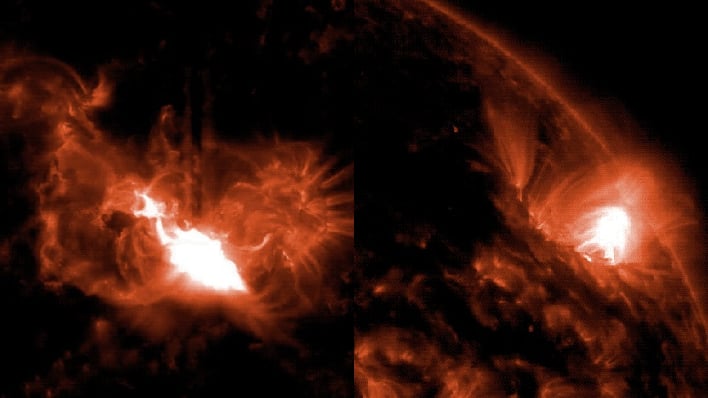Solar Flares Hurtling Towards Earth Trigger Rare Severe Geomagnetic Storm Warning

According to NASA, the Sun emitted two strong solar flares on May 7 and May 8, with both being classified as X1.0 flares (X-class denotes the most intense flares). The two solar flares are expected to merge and arrive at Earth by late Friday, or early on Saturday. The SWPC adds that the intense solar flares could produce an aurora that may be visible over much of the northern half of the US, and perhaps as far south as Alabama to northern California.
“G4 storms are relatively rare, with about 100 over the course of an 11-year solar cycle,” explained Rob Steenburgh, a space scientist at the SWPC. “The strongest storms (G5-extreme) are the most rare, with only 4 during the course of an average solar cycle.”
A G4 geomagnetic storm is considered severe on the NOAA space weather scale. The agency states it could produce widespread voltage control problems, as well as some protective systems mistakenly tripping out key assets from the grid. Spacecraft could also be affected, as they may experience surface charging and tracking problems, with corrections possibly needed for orientation problems. Other systems that may be affected include HF radio propagation sporadic, satellite navigation degraded for hours, low-frequency radio navigation disrupted, and induced pipeline currents affecting preventive measures.
NOAA describes CMEs as being explosions of plasma and magnetic fields from the sun’s corona, and cause geomagnetic storms. The G4 geomagnetic storm headed toward Earth currently is the first G4 Watch since 2005.
Those wishing to keep track of the G4 geomagnetic storm can do so via the Space Weather Prediction Center’s website. Also, if you live in the northern part of the US, keep an eye for an aurora late tonight and into early Saturday.


